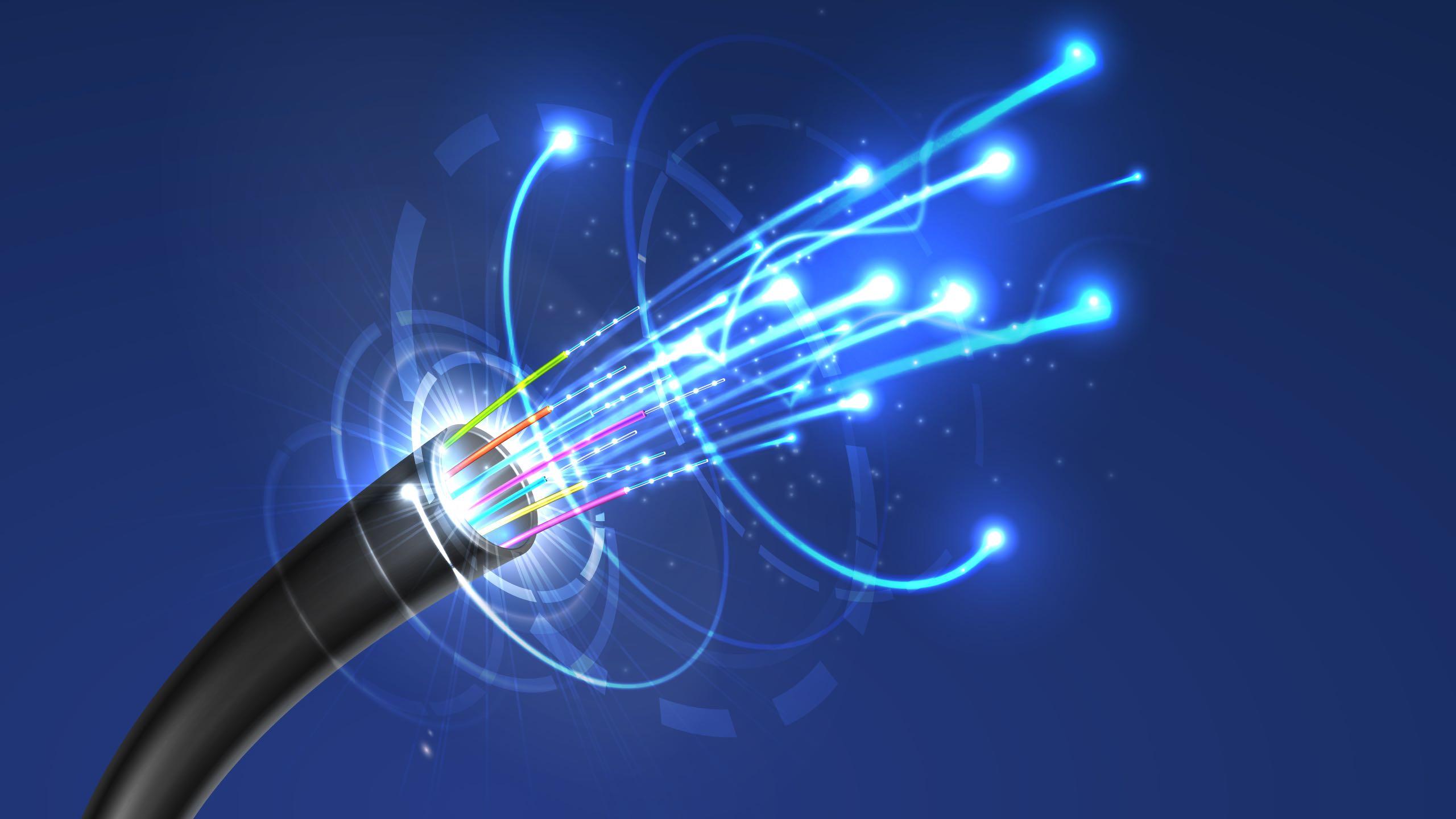
What is Fiber Internet?
Written by Sonic Team
October 25, 2022 | 3 min read
Fiber-optic internet, often known as just “fiber”, is exactly what it sounds like: small glass strands less than the size of a human hair which transmit data using light and stretch across cities, states, and countries to transmit information. These fiber cables can be hung from utility poles or buried underground and are eventually connected directly to your home or business to deliver internet at lightning-fast speeds.
Did you say light?
Yes, yes we did.
When you break fiber-optic internet down to the bare bones of what it is, fiber internet is data being transmitted to your home by light. Not copper wiring or airwaves; light. Now of course, this is no easy feat.
The light travels the fiber-optic strands mentioned earlier, bouncing off the glass at an extremely shallow angle of less than 42 degrees. It then reflects back in a similar way to how light interacts with a mirror or a prism. This allows the light to ricochet its way straight to your devices.
That’s short of how Fiber brings the internet to your home. But what about the rest of it? There’s more than just glass in those cables.
Okay but how does Fiber-optic Internet work?
Each fiber-optic cable is made of two parts, the Core, and the Cladding. The Core makes up the glass strands we’ve been speaking about (The ones smaller than a human hair). While the Cladding is a wrapping or covering for each strand, typically made of thicker plastic or glass.
The Core and the Cladding together create an effect necessary to Fiber-optic Internet called internal reflection. This is the process we spoke of earlier by which the light is able to move through the fiber cabling without being dispersed or lost.
These effects together are how the glass is able to bend. It is also the process that slows down the beam of light through fiber optic glass cables transmitting your internet data.
And all of this creates the astounding speeds that Fiber internet can reach.
How much faster can Fiber really be?
For reference, these days internet speeds are typically measured in how many bits of data are traveling through your connection per second. Think of Internet speeds the same way you think of your car speedometer, except significantly faster.
Mbps (Megabits per second) refers to millions of bits per second. Most copper-wired Internet connections register in the Megabits when conducting an Internet speed test.
Gbps (Gigabits per second), on the other hand, refers to billions of bits per second. For reference, a single Gigabit is 1000 times faster than 1 Megabit!
So, while the FCC (Federal Communications Commission) used to consider 25 Megabits per second to be a strong Internet connection, Fiber-Optic Internet can now reach speeds of up to 1, 5, or even 10 Gigabits per second, limited only by the equipment in your home today.
As our needs for connectivity grow, faster speeds will continue to be critical. At Sonic, we offer up to 10 Gigabits symmetrical home internet connection (the fastest in America). And to quickly do that math for you, that equates to 10,000 Megabits.
But what kind of internet did I have before?
Before fiber, most traditional internet was strung together by copper wiring, as opposed to glass cabling. And while copper may sound like the stronger material, the wires that DSL (Digital Subscriber Line) and cable internet use were originally made to transmit mainly voice and audio, and only later upgraded to transmit video as well. There are limitations on the amount of data they can handle.
It must be stated that both DSL and cable have improved their Internet connections over the years, so comparison can at times be difficult when you’re looking at different Internet plans.
If fiber is so good, why isn’t it everywhere?
Fiber-optic internet is the best connection you can bring to your home today. However, infrastructure and construction costs are often the major hurdles ISPs (Internet Service Providers) face when trying to deploy Fiber networks. And with little to no competition historically, what’s their incentive?
Thankfully, because of an increase in competition, city-wide Fiber installations are more prevalent now, such as Sonic’s work with Santa Rosa, Oakland, and countless other cities. ISPs create partnerships with city officials and work through the planning and costs of integrating Fiber-optic cables into already existing Internet infrastructure.
Conclusion
Fiber-optic internet is our future. While this recent progress is promising for America, we’re decades behind more progressive countries in adopting this critical technology. We need more ISPs to step up for consumers, and Sonic has always been up for that challenge. Sonic will always be dedicated to building fiber networks as quickly as possible bringing faster, more affordable connectivity to as many people as we can using the best technology available.
